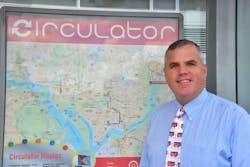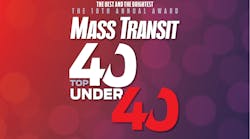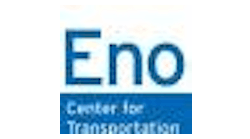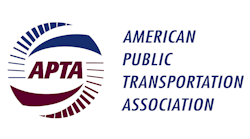- One word to describe yourself: Blessed
- Alma mater: College of the Holy Cross in Worcester, Massachusetts
- Favorite book: "The Great Gatsby" by F. Scott Fitzgerald
- Favorite TV show: "The Wire"
- Favorite movie: "The Shawshank Redemption"
- Favorite hobby(ies): SCUBA diving
- Fun fact about yourself: "My karaoke rendition of 'Walking In Memphis' is pretty good."
- Favorite station or stop that you have ever visited or frequent (and why): One of the biggest projects I worked on early in my career in transit was the Paul S. Sarbanes Transit Center in Silver Spring, Maryland. The project had serious and well-publicized problems that took years to resolve, but everyone involved worked through the issues in order to improve connectivity and safety for bus riders in Silver Spring. We stumbled, paid a steep price, but kept our focus on the benefits the facility would provide for riders and got it open in September 2015. Two months later, my wife and I moved in across the street and we can now see all the buses coming and going from our front window.
- Favorite route you have ever ridden or frequent (and why): It will not be open for service until 2022, but I am very excited to ride the Purple Line now under construction in Maryland. I was able to participate in the project as it moved through planning and engineering and during moments when cancellation seemed all but inevitable. The project is now moving forward and will create faster connections with additional capacity to link the vibrant and growing communities across the 16-mile corridor.
Sean Egan began his public transit career with the Maryland Transit Administration (MTA) in Baltimore, Maryland. At the MTA, he managed the $2 billion, 6-year Capital Improvement Plan, directing critical investments in bus and paratransit, as well as light rail, subway, and commuter-rail projects. He focused on detailed analysis of project schedules and budgets that enabled the MTA to increase delivery of the capital program and managed federal grants with a value of $1 billion.
In 2013, Egan had the opportunity to advance within the Maryland Department of Transportation (MDOT) to be the director of the Washington Area Transit Office, serving as the liaison between the MDOT secretary and the Washington Metropolitan Area Transit Authority (Metro). This position required analysis of financial, operational and service developments at Metro, and to present findings and recommendations to the MDOT secretary and Maryland’s representatives on the Metro Board of Directors.
His interest in operations led him to a new role in 2015 as the deputy associate director for Transit Operations at the District Department of Transportation (DDOT). At DDOT, Egan oversaw the six-route, 72-vehicle DC Circulator program that provides 5 million trips annually. He was tasked with three major initiatives, transitioning management of the DC Circulator operations and maintenance contract, purchasing buses for fleet renewal, and restructuring low-performing routes.
In 2017, he and his team released DDOT’s first bus operations and maintenance solicitation, which was awarded in July 2018, allowing DDOT to take on management control of the DC Circulator that is currently managed by Metro. Egan also led DDOT’s first-ever bus purchase, including 14 100 percent battery-electric buses that began service in May 2018, giving DDOT the largest electric bus fleet on the East Coast.
Egan completed the Eno Transportation Center Transit Mid-Manager Seminar in 2017 and is a member of several APTA committees, serving as the secretary of the Clean Propulsion Committee, and was recently accepted into the Leadership APTA Class of 2019.
“When I got my first job in transit at the MTA in Baltimore, I met with one of the agency leaders to learn about all of the different challenges facing the agency’s capital program. When the review was complete, I asked what agency leadership was going to do to address these many complex issues. The response was simple; their work was done. “We hired you.” That experience gave me both the support and the confidence to take on difficult and entrenched problems and get to work on solving them."
“I can look out the window of my office and see the results of my work, buses I helped to purchase, running on a route I helped to design, and watch people boarding the bus because they know it will reliably take them where they want to go.”
“In government agencies, it is very easy to lose sight of what our work is really about: providing mobility for our customers. My team and I often get caught up in budget, procurement, compliance, and all of the other processes necessary to provide the service. These are important, but they are a means to an end: providing the high-quality service our customers deserve. Our challenge is to keep our focus on the people we serve.”
“My first year at the MTA, we delivered only 59 percent of the work we had promised to complete that year. This meant that we were wasting resources by borrowing money we would not use, but more important, it meant that projects that would improve service for our riders were not getting done. I spent the next two years working to overhaul the management of the capital program, working closely with project managers, conducting training programs, providing written procedures for updating reports, and restructuring the reports to emphasize the most critical information that decision makers would need. The result was a 96 percent delivery rate in my third year and a sustained improvement in the agency’s approach to capital program delivery. That I was able to take a comprehensive approach to reforming the program, and that the reforms were sustained, is a source of great pride.”
“I think it is important in our business to take chances, to raise our risk tolerance so that we can take advantage of innovation and tackle the multitude of challenges we face. With this approach, we need to be willing to accept that at times we will make mistakes and fall short of our goals. As long as we take responsibility for our stumbles and are open and honest about them, we will accomplish much more by being bold than by being cautious.”
“I like the sense of collegiality in the industry, the idea that we are all in this together. So many times I have reached out to someone at another agency for help with a problem, and time after time, people are willing to lend a hand, share their experience, what they learned, and how I might be able to use their knowledge to solve my problem.”






